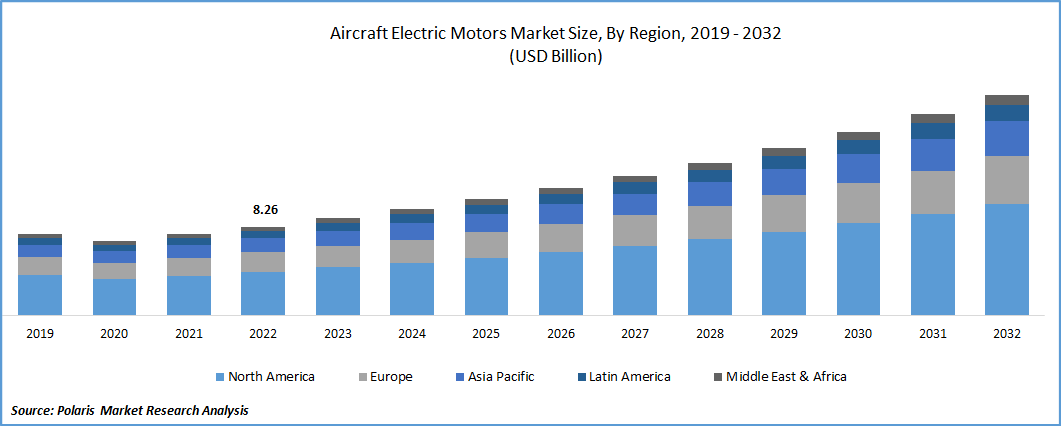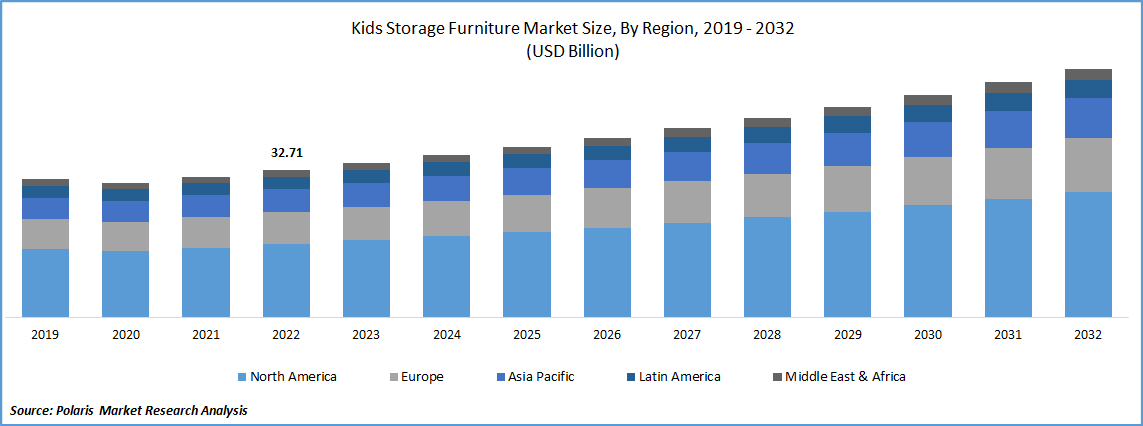Opportunities in the Polypropylene Market Worldwide
Market Overview
Global Polypropylene Market Size And Share Is Currently Valued At Usd 133.31 Billion In 2024 And Is Anticipated To Generate An Estimated Revenue Of Usd 223.54 Billion By 2034, According To The Latest Study By Polaris Market Research. Besides, The Report Notes That The Market Exhibits A Robust 5.3% Compound Annual Growth Rate (Cagr) Over The Forecasted Timeframe, 2025 - 2034
Polypropylene, a thermoplastic polymer, is widely used due to its high chemical resistance, flexibility, and recyclability. Its applications range from automotive components and industrial containers to medical devices and packaging films. The market is witnessing robust growth driven by rising industrialization, urbanization, and the increasing use of lightweight materials in transportation to improve fuel efficiency. The growing demand for packaging solutions in emerging economies further reinforces the material’s relevance in various sectors. Additionally, innovations in polymer blends and copolymers are providing enhanced material properties, allowing polypropylene to be used in more specialized applications.
Country-wise Market Trends
United States: The United States remains a significant player in the polypropylene market, driven primarily by the automotive and packaging industries. Demand for polypropylene-based lightweight automotive parts is growing due to stricter fuel efficiency regulations. Furthermore, the rise of e-commerce has fueled demand for polypropylene packaging, particularly in flexible and protective solutions. Industry participants are also investing in recycling technologies to meet sustainability goals and regulatory standards.
Germany: Germany is emerging as a key market in Europe due to its strong automotive and manufacturing base. Polypropylene is widely used in automotive interiors, under-the-hood components, and household appliances. The country is also witnessing growing interest in sustainable materials, prompting manufacturers to explore bio-based polypropylene and recyclable polymer solutions. R&D investments are increasing in polymer modification techniques to enhance performance under high temperature and mechanical stress conditions.
China: China continues to dominate the Asia Pacific polypropylene market, driven by the rapid growth of the packaging, construction, and consumer electronics sectors. Increasing industrial production and urbanization have fueled demand for polypropylene films, containers, and piping materials. The market is further supported by government initiatives promoting modern manufacturing and infrastructure development. Local producers are investing in capacity expansion and technology upgrades to cater to domestic consumption and export opportunities.
India: India is emerging as a key growth hub for polypropylene, largely due to rising demand from the packaging, automotive, and textile sectors. The surge in organized retail, e-commerce, and food packaging has created a strong demand for flexible and rigid polypropylene solutions. Furthermore, automotive manufacturers in India are adopting polypropylene for lightweight interiors and battery components in electric vehicles, contributing to market growth. Strategic collaborations and capacity expansions are common as companies look to strengthen their footprint in the region.
Japan: Japan’s polypropylene market is primarily driven by advanced manufacturing industries, including automotive, electronics, and medical devices. There is a strong emphasis on high-performance polypropylene grades suitable for engineering and specialty applications. Japanese manufacturers are also actively working on circular economy initiatives, focusing on recycling and reuse of polypropylene in line with environmental sustainability goals. The adoption of innovative compounding and polymer processing techniques supports the development of durable and lightweight components.
Brazil: In South America, Brazil represents a key market for polypropylene, largely driven by packaging and consumer goods demand. Polypropylene is extensively used in food packaging, healthcare products, and household items due to its affordability and chemical resistance. Local manufacturers are exploring biopolymers and recycled polypropylene to meet environmental regulations and consumer expectations. Investments in production capacity and modern processing technologies are helping to strengthen the market’s competitiveness in the region.
𝐄𝐱𝐩𝐥𝐨𝐫𝐞 𝐓𝐡𝐞 𝐂𝐨𝐦𝐩𝐥𝐞𝐭𝐞 𝐂𝐨𝐦𝐩𝐫𝐞𝐡𝐞𝐧𝐬𝐢𝐯𝐞 𝐑𝐞𝐩𝐨𝐫𝐭 𝐇𝐞𝐫𝐞:
https://www.polarismarketresearch.com/industry-analysis/global-polypropylene-market
Market Trends
Several global trends are shaping the polypropylene market landscape. One significant trend is the rising focus on sustainability, with companies increasingly adopting recycled polypropylene and bio-based alternatives. Governments and regulatory bodies in many countries are pushing for greener production methods and reduction of plastic waste, prompting manufacturers to innovate in polymer recovery and recycling technologies.
Another key trend is the growth of lightweight applications, particularly in automotive and transportation sectors. Polypropylene’s low density and mechanical strength make it an ideal choice for components aimed at reducing vehicle weight and improving fuel efficiency. The shift toward electric vehicles is also creating opportunities for polypropylene in battery housings, insulation, and interior components.
Additionally, the packaging sector remains a primary driver, as consumer demand for convenient, flexible, and protective packaging solutions continues to rise globally. Polypropylene’s versatility enables it to be used in films, trays, containers, and molded products, meeting both functional and aesthetic requirements.
Emerging applications, such as in medical devices, textiles, and electronics, are further expanding the market potential. Manufacturers are increasingly leveraging polymer modifications, copolymerization, and advanced compounding techniques to develop high-performance grades suitable for specific industrial and consumer needs.
Conclusion
The Polypropylene Market Is Experiencing Growth Due To Rising Applications Across Packaging, Automotive, Textiles, And Consumer Goods Sectors. Its Versatility, Durability, And Cost-Effectiveness Make It A Preferred Material For Multiple Industries. Technological Advancements In Polymerization, Recycling, And Biodegradable Alternatives Enhance Performance And Sustainability. Increasing Industrialization, Urbanization, And Consumer Demand Further Drive Adoption. Overall, The Market Is Expected To Grow Steadily, Fueled By Innovation, Expanding Applications, And Rising Global Demand For Versatile And Sustainable Polypropylene Solutions Across Diverse Industries.
More Trending Latest Reports By Polaris Market Research:
Candle Market
Air Separation Plant Market
Water Scale Removal Market
Drug Device Combination Products Market
Air Separation Plant Market
Space Debris Monitoring and Removal Market
Smart Electric Cloth Dryer Market
Automotive E-Compressor Market
Milking Robots Market
Flat Glass Market
Mattress Market
Industrial Access Control Market
Flat Glass Market
Peppermint Oil Market
Text-to-Speech Market
Automotive E-Compressor Market
Opportunities in the Polypropylene Market Worldwide
Market Overview
Global Polypropylene Market Size And Share Is Currently Valued At Usd 133.31 Billion In 2024 And Is Anticipated To Generate An Estimated Revenue Of Usd 223.54 Billion By 2034, According To The Latest Study By Polaris Market Research. Besides, The Report Notes That The Market Exhibits A Robust 5.3% Compound Annual Growth Rate (Cagr) Over The Forecasted Timeframe, 2025 - 2034
Polypropylene, a thermoplastic polymer, is widely used due to its high chemical resistance, flexibility, and recyclability. Its applications range from automotive components and industrial containers to medical devices and packaging films. The market is witnessing robust growth driven by rising industrialization, urbanization, and the increasing use of lightweight materials in transportation to improve fuel efficiency. The growing demand for packaging solutions in emerging economies further reinforces the material’s relevance in various sectors. Additionally, innovations in polymer blends and copolymers are providing enhanced material properties, allowing polypropylene to be used in more specialized applications.
Country-wise Market Trends
United States: The United States remains a significant player in the polypropylene market, driven primarily by the automotive and packaging industries. Demand for polypropylene-based lightweight automotive parts is growing due to stricter fuel efficiency regulations. Furthermore, the rise of e-commerce has fueled demand for polypropylene packaging, particularly in flexible and protective solutions. Industry participants are also investing in recycling technologies to meet sustainability goals and regulatory standards.
Germany: Germany is emerging as a key market in Europe due to its strong automotive and manufacturing base. Polypropylene is widely used in automotive interiors, under-the-hood components, and household appliances. The country is also witnessing growing interest in sustainable materials, prompting manufacturers to explore bio-based polypropylene and recyclable polymer solutions. R&D investments are increasing in polymer modification techniques to enhance performance under high temperature and mechanical stress conditions.
China: China continues to dominate the Asia Pacific polypropylene market, driven by the rapid growth of the packaging, construction, and consumer electronics sectors. Increasing industrial production and urbanization have fueled demand for polypropylene films, containers, and piping materials. The market is further supported by government initiatives promoting modern manufacturing and infrastructure development. Local producers are investing in capacity expansion and technology upgrades to cater to domestic consumption and export opportunities.
India: India is emerging as a key growth hub for polypropylene, largely due to rising demand from the packaging, automotive, and textile sectors. The surge in organized retail, e-commerce, and food packaging has created a strong demand for flexible and rigid polypropylene solutions. Furthermore, automotive manufacturers in India are adopting polypropylene for lightweight interiors and battery components in electric vehicles, contributing to market growth. Strategic collaborations and capacity expansions are common as companies look to strengthen their footprint in the region.
Japan: Japan’s polypropylene market is primarily driven by advanced manufacturing industries, including automotive, electronics, and medical devices. There is a strong emphasis on high-performance polypropylene grades suitable for engineering and specialty applications. Japanese manufacturers are also actively working on circular economy initiatives, focusing on recycling and reuse of polypropylene in line with environmental sustainability goals. The adoption of innovative compounding and polymer processing techniques supports the development of durable and lightweight components.
Brazil: In South America, Brazil represents a key market for polypropylene, largely driven by packaging and consumer goods demand. Polypropylene is extensively used in food packaging, healthcare products, and household items due to its affordability and chemical resistance. Local manufacturers are exploring biopolymers and recycled polypropylene to meet environmental regulations and consumer expectations. Investments in production capacity and modern processing technologies are helping to strengthen the market’s competitiveness in the region.
𝐄𝐱𝐩𝐥𝐨𝐫𝐞 𝐓𝐡𝐞 𝐂𝐨𝐦𝐩𝐥𝐞𝐭𝐞 𝐂𝐨𝐦𝐩𝐫𝐞𝐡𝐞𝐧𝐬𝐢𝐯𝐞 𝐑𝐞𝐩𝐨𝐫𝐭 𝐇𝐞𝐫𝐞:
https://www.polarismarketresearch.com/industry-analysis/global-polypropylene-market
Market Trends
Several global trends are shaping the polypropylene market landscape. One significant trend is the rising focus on sustainability, with companies increasingly adopting recycled polypropylene and bio-based alternatives. Governments and regulatory bodies in many countries are pushing for greener production methods and reduction of plastic waste, prompting manufacturers to innovate in polymer recovery and recycling technologies.
Another key trend is the growth of lightweight applications, particularly in automotive and transportation sectors. Polypropylene’s low density and mechanical strength make it an ideal choice for components aimed at reducing vehicle weight and improving fuel efficiency. The shift toward electric vehicles is also creating opportunities for polypropylene in battery housings, insulation, and interior components.
Additionally, the packaging sector remains a primary driver, as consumer demand for convenient, flexible, and protective packaging solutions continues to rise globally. Polypropylene’s versatility enables it to be used in films, trays, containers, and molded products, meeting both functional and aesthetic requirements.
Emerging applications, such as in medical devices, textiles, and electronics, are further expanding the market potential. Manufacturers are increasingly leveraging polymer modifications, copolymerization, and advanced compounding techniques to develop high-performance grades suitable for specific industrial and consumer needs.
Conclusion
The Polypropylene Market Is Experiencing Growth Due To Rising Applications Across Packaging, Automotive, Textiles, And Consumer Goods Sectors. Its Versatility, Durability, And Cost-Effectiveness Make It A Preferred Material For Multiple Industries. Technological Advancements In Polymerization, Recycling, And Biodegradable Alternatives Enhance Performance And Sustainability. Increasing Industrialization, Urbanization, And Consumer Demand Further Drive Adoption. Overall, The Market Is Expected To Grow Steadily, Fueled By Innovation, Expanding Applications, And Rising Global Demand For Versatile And Sustainable Polypropylene Solutions Across Diverse Industries.
More Trending Latest Reports By Polaris Market Research:
Candle Market
Air Separation Plant Market
Water Scale Removal Market
Drug Device Combination Products Market
Air Separation Plant Market
Space Debris Monitoring and Removal Market
Smart Electric Cloth Dryer Market
Automotive E-Compressor Market
Milking Robots Market
Flat Glass Market
Mattress Market
Industrial Access Control Market
Flat Glass Market
Peppermint Oil Market
Text-to-Speech Market
Automotive E-Compressor Market








